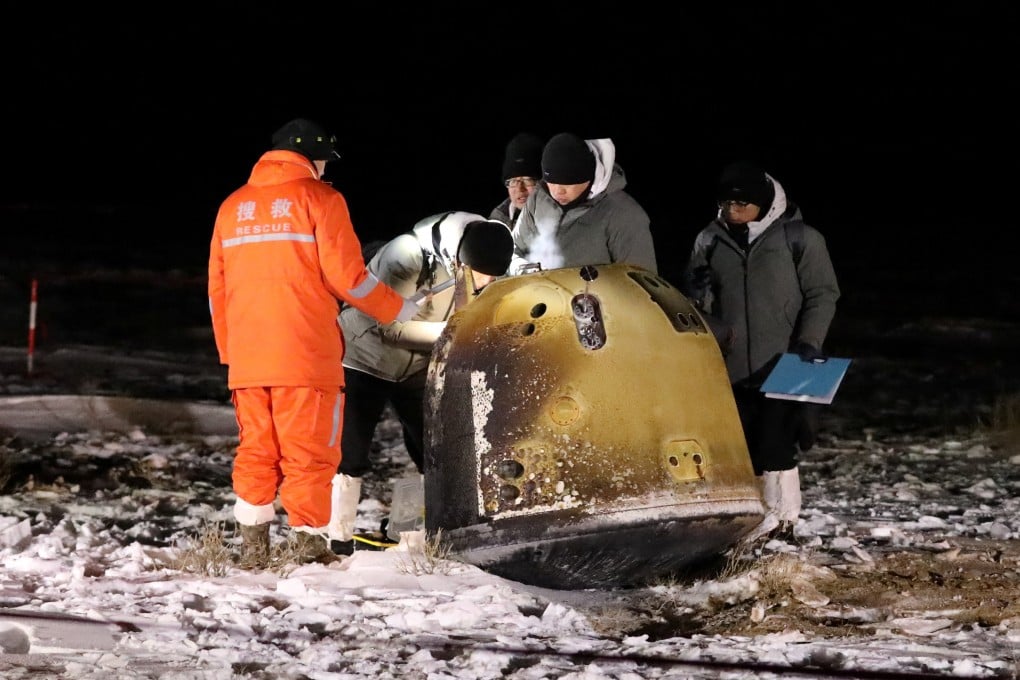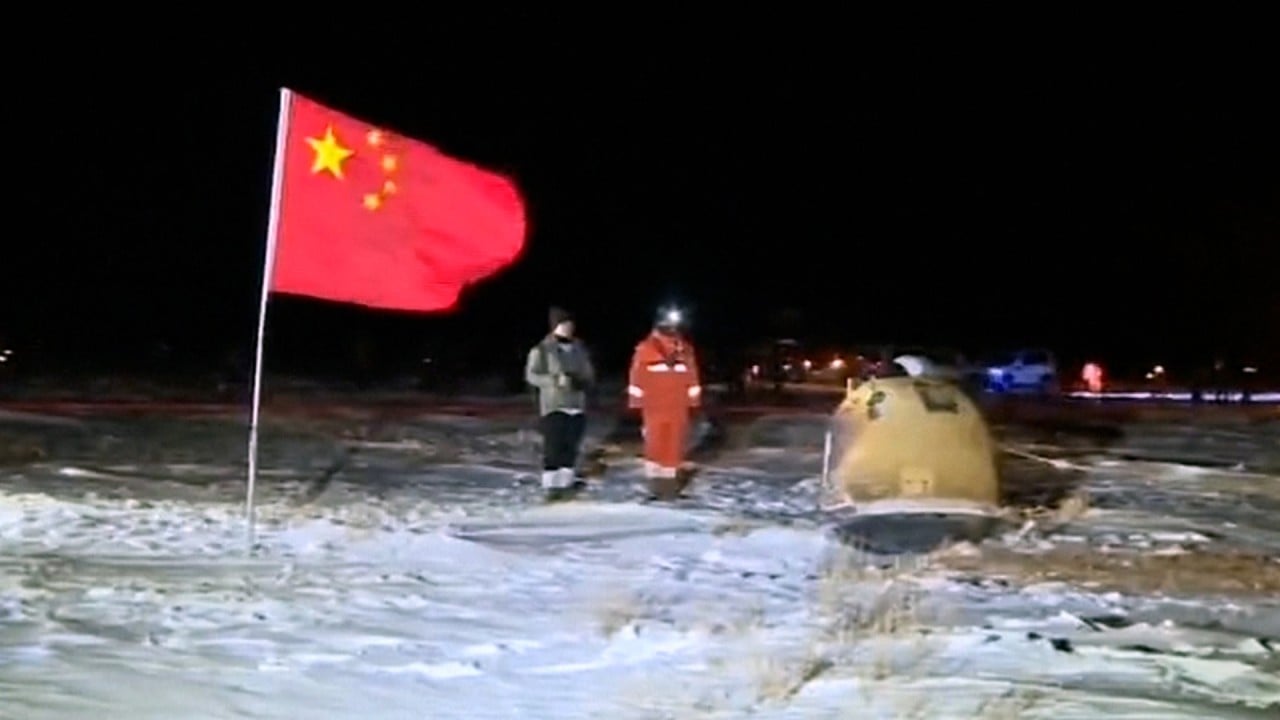Advertisement
Chinese scientists analysing Chang’e 5 lunar rock samples find clues to moon’s past in super-hard material
- Soil samples brought to Earth by Chinese moon mission show unique mineral was likely produced in Aristarchus crater and ejected northward to sample site
- ‘Our work reminded us that nature often works in a more complicated way than how we simulate it in a lab,’ says lead author Du Wei
Reading Time:3 minutes
Why you can trust SCMP
14

Ling Xinin Ohio
Chinese scientists are offering new insights into the moon’s past by analysing the unique make-up of lunar samples returned by the country’s Chang’e 5 mission.
Advertisement
When an asteroid or comet crashed into the lunar surface 280 million years ago, it created pressures as high as 40 gigapascals – about 400,000 atmospheres – within a fraction of a second.
The collision not only left behind one of today’s brightest craters on the moon’s surface, but compressed some soils into a special form of silicon dioxide known as seifertite, which was never confirmed in the samples of the United States’ Apollo or Soviet Union’s Luna missions.
The process might be more complicated than scientists had previously thought, a team from the Institute of Geochemistry, Chinese Academy of Sciences, in Guiyang reported in Matter and Radiation at Extremes journal last month.
“The unique mineral was likely produced in the Aristarchus crater, and then ejected northward to the Chang’e 5 sampling site,” said the paper’s lead author Du Wei.
Advertisement

Advertisement
